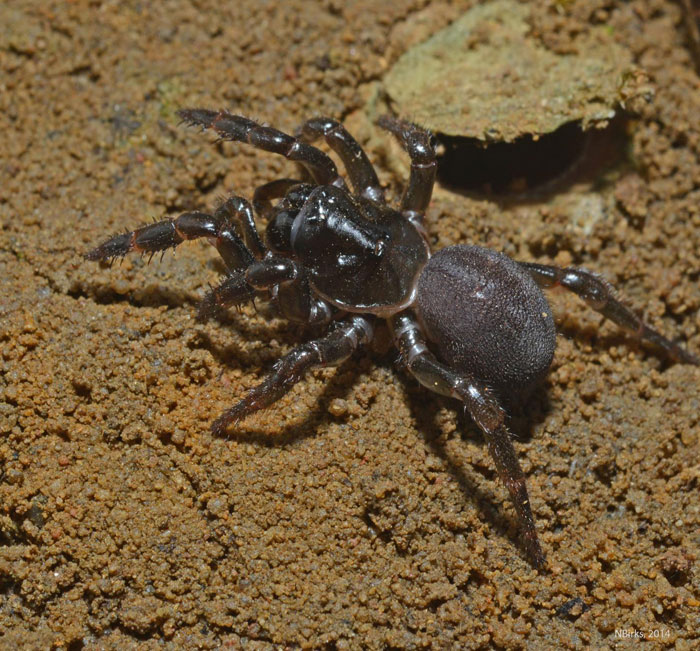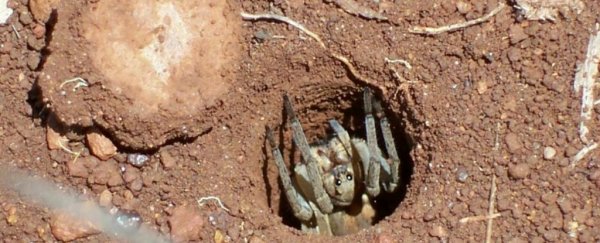Tales of epic ocean crossings are usually reserved for sailors with two legs, but an eight-legged odyssey millions of years ago may well be the most daring sea voyage in maritime history.
The Australian trapdoor spider (Moggridgea rainbowi) was long thought to have arrived down under as a result of the breakup of the ancient supercontinent Gondwana almost 100 million years ago, but a new study says seafaring spiders are the only explanation.
"Conventional wisdom had suggested the spiders became split from their South African relations with the separation of Africa from Gondwana around 95 million years ago," says researcher Sophie Harrison from the University of Adelaide in Australia.
"But our research showed that the divergence of M. rainbowi from African Moggridgea trapdoor spiders occurred sometime between 2 and 16 million years ago, well after the Africa-Gondwana separation."
 Nick Birks
Nick Birks
Harrison and fellow researchers ran a genetic analysis comparing trapdoor spiders from Kangaroo Island in Australia and South Africa.
By sequencing each species' DNA and comparing sets of genes, the team found they both belonged to the same genus, and dated their historical divergence to sometime between 2–16 million years ago.
In the absence of a land rift explanation for how these tiny coin-sized arachnids made their way down south, there's also the hypothesis that humans somehow introduced the spiders – except once again the evidence suggests they got to Australia well before humans.
If both those possibilities are discounted, how else to account for Moggridgea rainbowi's existence down under, a world apart from their closest relatives?
The answer seems to have involved eight legs, four paddles, and a heck of a lot of gumption – with the intrepid sea spiders (not like these ones) somehow voyaging across the Indian Ocean on a 10,000-km (6,200-mile) trek koala-wards. Ahoy!
"At first thought, this does seem incredible," admits one of the team, evolutionary biologist Andrew Austin.
"But there are precedents of such ocean travel. Moggridgea are also found on the Comoros volcanic islands, 340 km from mainland Africa, however this is a relatively short distance compared with the 10,000 kms from South Africa to Kangaroo Island."
The researchers speculate that trapdoors made the trip on a proxy 'raft' made from a chunk of land, debris, or vegetation that broke free and drifted off into the blue horizon yonder.
The delicious irony in all this is that, as far as spiders go, trapdoors are known for their sedentary nature – they usually only move a couple of metres in their whole lives, keeping nice and close to their egg-laying mothers.
Despite this seeming aversion to travel, it turns out they would actually fare pretty well on the high seas, though, if push came to shove.
"While it may be difficult to picture, these spiders may be actually better suited to rafting than we'd initially think," Harrison told Andrew Masterson at Cosmos.
"They construct burrows with secure, well-fitting lids, which creates a secure microclimate and offers them protection during the journey. They have a very low metabolic rate, which means they have low food and resource requirements during the trip."
Not bad travel companions from the sounds of things, provided you have a yearning for adventure.
The findings are reported in PLOS ONE.
